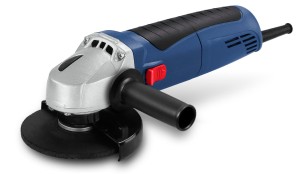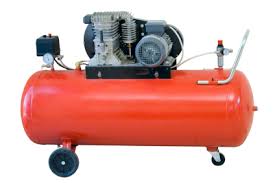Biscuit Joiner
A biscuit joiner (or sometimes plate joiner) is a woodworking tool used to join two pieces of wood together. A biscuit joiner uses a small circular saw blade to cut a crescent-shaped hole (called the mouth) in the opposite edges of two pieces of wood or wood composite panels. An oval-shaped, highly dried and compressed wooden biscuit (beech or particle wood) is covered with glue, or glue is applied in the slot. The biscuit is immediately placed in the slot, and the two boards are clamped together. The wet glue expands the biscuit, further improving the bond.

History
The biscuit joining system was invented in 1956 in Liestal, Switzerland by Hermann Steiner. Steiner opened his carpenter’s shop in 1944, and, in the middle of the 1950s, while looking for a simple means of joining the recently introduced chipboard, invented (almost by accident) the now world-famous Lamello joining system. In the succeeding years there followed further developments such as the circular saw and the first stationary biscuit (plate) joining machine in 1956 followed by the first portable biscuit joiner for Lamello grooves in 1968. In 1969 the family operation was incorporated by the name of Lamello AG. Lamello continues to manufacture very high-end biscuit joiners such as the Lamello Top 20.
Several other companies such as Porter Cable, Dewalt, and Makita also manufacture compatible biscuit joiners, including some models with interchangeable blades, enabling the user to cut both 4″ and 2″ biscuit slots.
Production
Biscuits are predominantly used in joining sheet goods such as plywood, particle board and medium-density fibreboard. They are sometimes used with solid wood, replacing mortise and tenon joints as they are easier to make and almost as strong. They are also used to align pieces of wood when joined edge-to-edge in making wider panels. It is important to use the same face when cutting the slots, so the boards are perfectly flush.
Biscuits are also used to align edges of workpieces, such as when forming a 90 degree angle between workpieces. The biscuit provides a quick means of getting a perfectly flush joint, while at the same time reinforcing the joint.
Typically, the machine will have an adjustable fence, so it can be set on an angle for joining mitered pieces.
Also, there are other types of specialty biscuits available, from metal connectors, used for removable panels, to hinges, making these portable machines even more flexible.
Usage
The workpieces are brought together and the user marks the location for the biscuits. Precise measurement is not required, as the biscuits are hidden when the pieces are assembled, so a quick pencil stroke that marks both pieces where they align is all that is required. The parts are separated and the machine is used to cut the slots in each piece. The machine has reference marks on the center line of the blade for easy alignment to the marks on the materials being joined.
The body of the machine with the blade is spring-loaded and in the normal position the blade is retracted. The operator aligns the machine and uses a firm pressure to push the body forward against the base plate to make the cut. The waste material is blown out of the slot on the right of the base plate.
Because the slots are slightly longer than the biscuits, it is still possible to slide the panels sideways after the joint is assembled (before the glue sets). This fact makes the biscuit joiner easy to use, because it does not require extreme accuracy or jigs to achieve perfect joints.






